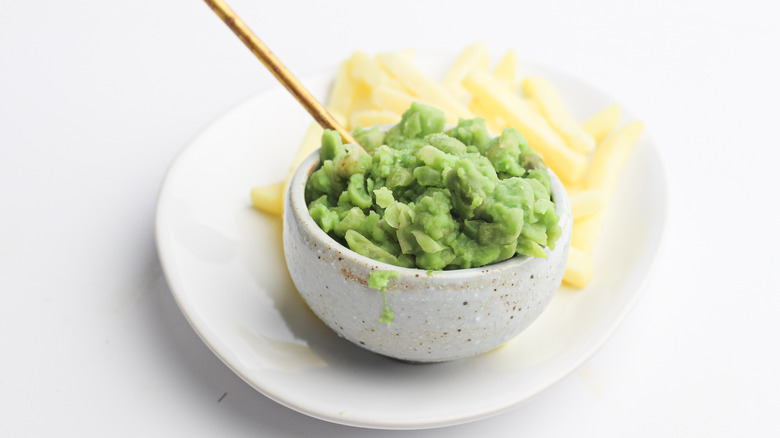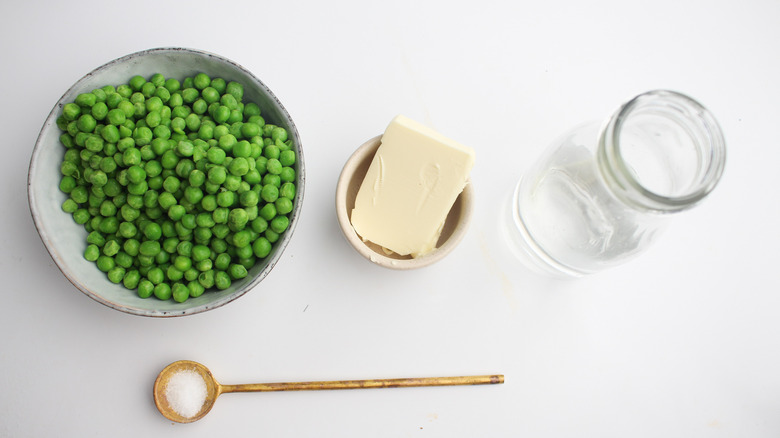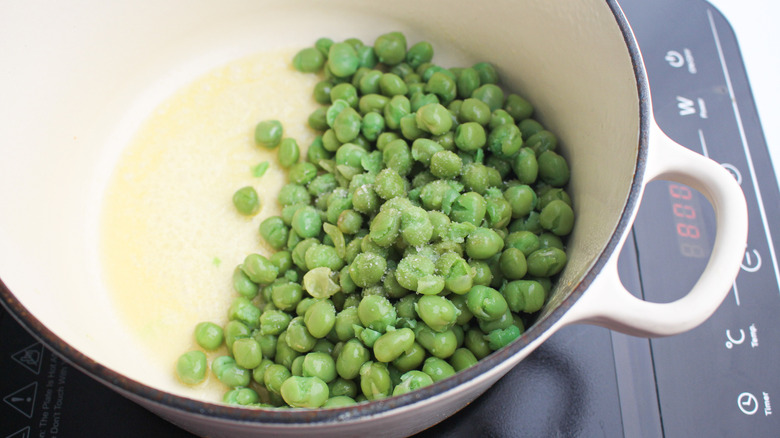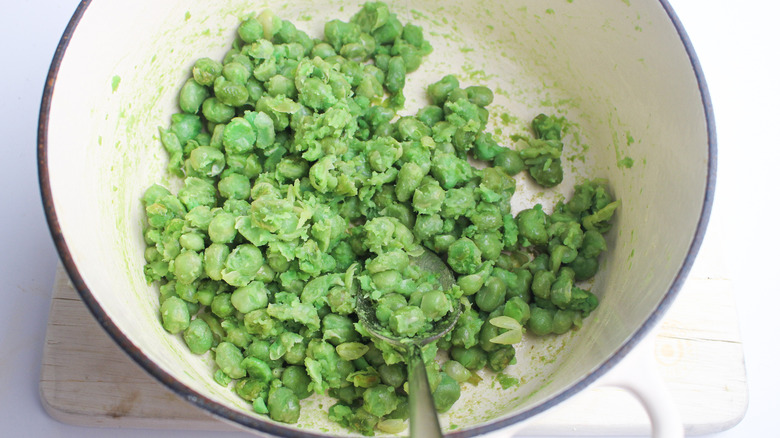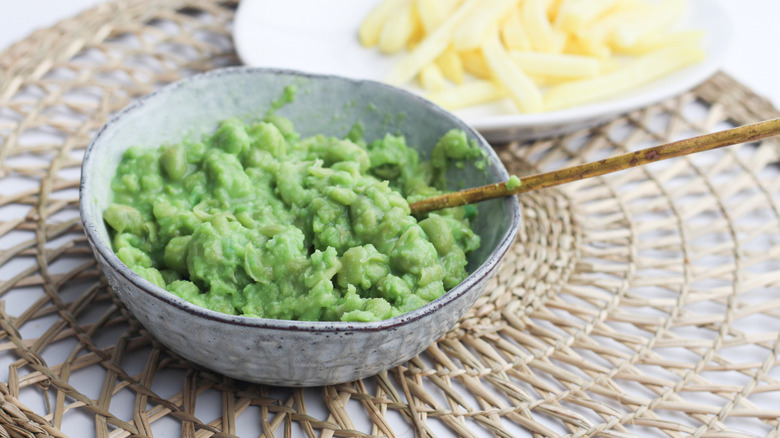Traditional Mushy Peas Recipe
We may receive a commission on purchases made from links.
When you want a simple and easy side dish that's both healthy and tastes incredible, these mushy peas from chef and recipe developer Susan Olayinka of The Flexible Fridge get the job done.
Haven't heard of mushy peas? Then it's time you hop across the pond and try out this side that Olayinka calls "a common dish in [the U.K.]" and one that's most often paired with that other British favorite, fish and chips. (Stateside, you may hear of the same dish referred to as "smashed peas" or "mashed peas," but let's be honest: The Brits know what they're talking about with this one.)
Easy to make, easier to enjoy, and usually a hit with all ages, Olayinka calls mushy peas "a great way to get more veg in! It is one of your five-a-day, [and] kids will love it as it's got butter and pairs [well] with their favorite foods."
Gather the ingredients for traditional mushy peas
This dish calls for just four ingredients, and two of said ingredients are things that you almost certainly already have on hand: water and salt. The other two are butter and marrowfat peas (though you can use split green peas instead).
Melt the butter and cook the peas
If you were lucky enough to find them at your disposal, rinse your canned marrowfat peas and then set them aside at the ready. Otherwise, cook your split green peas or run your canned green peas under warm water.
Next, heat a frying pan over medium-high heat and add the butter, letting it melt and moving the pan so it spreads out evenly. After the butter has melted, add the peas and salt and cook them for five minutes on low-medium heat, stirring occasionally.
Add water and simmer, then mash the peas
After five minutes of sauteing the peas in the butter, add the water and cook the veggies for a further two minutes. After those two minutes are up, take the pan off the stove and mash the peas with the back of a spoon. Your classic British dish is now ready to be served — ideally with fish and chips, of course.
And if you have a serving or two left over after the meal, Olayinka says it will keep well in an "airtight container [in the fridge] for two to three days and will reheat well, [just] add water if it appears dry."
Pairs well with mushy peas
Traditional Mushy Peas Recipe Directions
When you want a simple and easy side dish that's both healthy and tastes incredible, these mushy peas from Susan Olayinka get the job done.
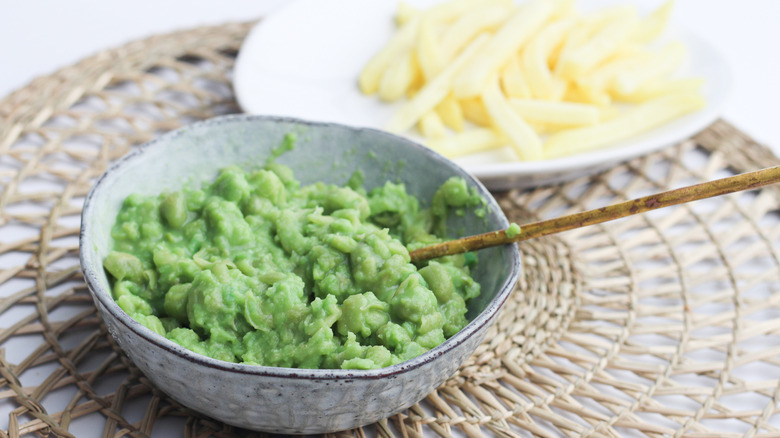
Ingredients
- 2 cups marrowfat peas (or split green peas)
- 1 tablespoon butter
- ½ teaspoon salt
- ½ cup water
Directions
- Rinse canned marrowfat peas or split green peas and set aside.
- Heat a frying pan over medium-high heat and add the butter, letting it melt.
- After butter has melted, add the peas and salt and cook for 5 minutes on low-medium heat, stirring occasionally.
- After 5 minutes, add water and cook for a further 2 minutes.
- Take peas off the stove and mash with the back of a spoon, then serve.
Nutrition
| Calories per Serving | 56 |
| Total Fat | 2.1 g |
| Saturated Fat | 1.3 g |
| Trans Fat | 0.1 g |
| Cholesterol | 5.1 mg |
| Total Carbohydrates | 7.0 g |
| Dietary Fiber | 2.5 g |
| Total Sugars | 2.7 g |
| Sodium | 163.8 mg |
| Protein | 2.6 g |
What type of peas work best when making mushy peas?
As you've followed along with this recipe, you likely noticed that the ingredients call for using either marrowfat peas or split green peas. Though marrowfat peas might not sound too familiar to a non-U.K. reader, they're just a type of pea that is left to dry out in the field as opposed to being harvested right away. Wasabi peas are typically made from marrowfat peas as well. And, when it comes to making the most traditional rendition of mushy peas, you'll want to try to find marrowfat peas above all else.
That said, if marrowfat peas just aren't an option, you can always use the aforementioned split green peas for a very similar, albeit slightly less traditional approach to mushy peas. Another option is to use frozen green peas, and an added perk is that you don't have to change anything about the cooking approach if you go the frozen route.
